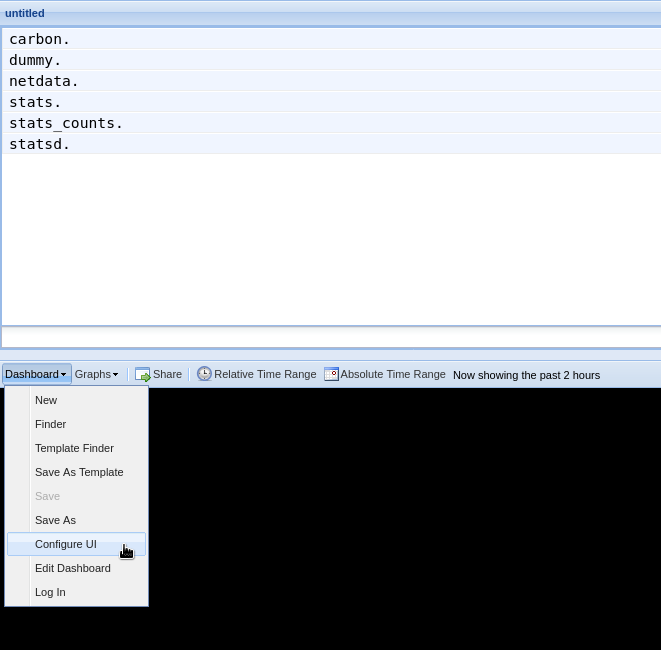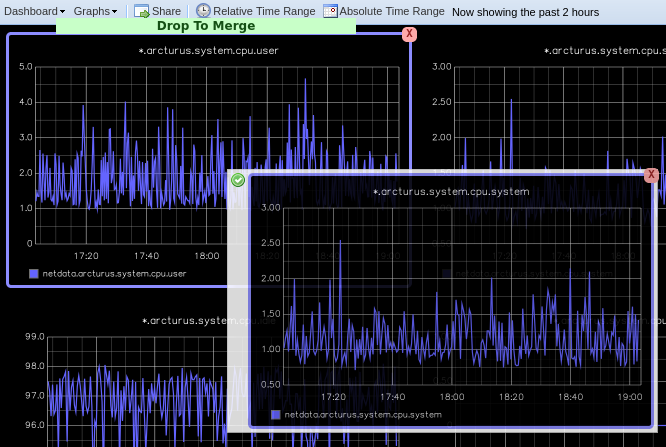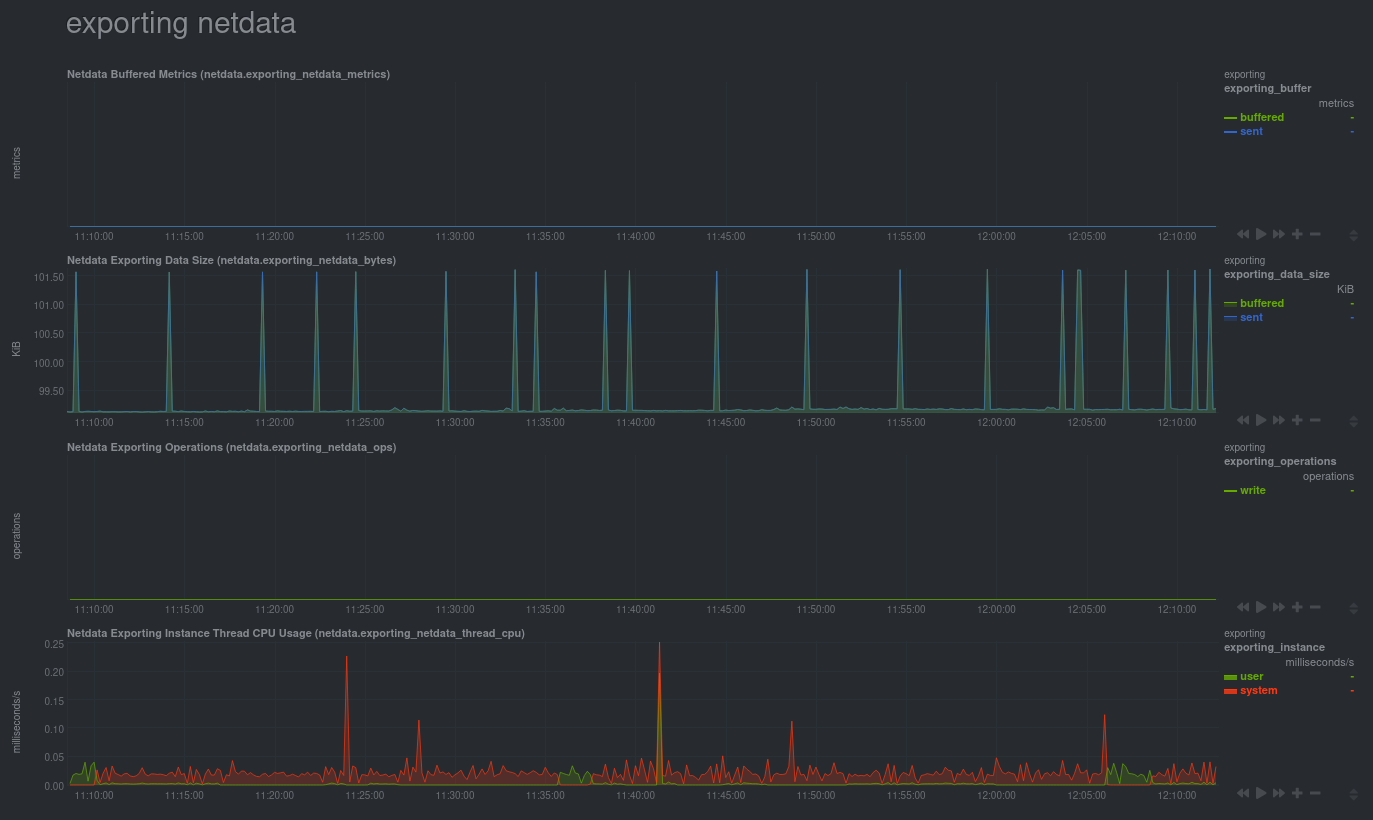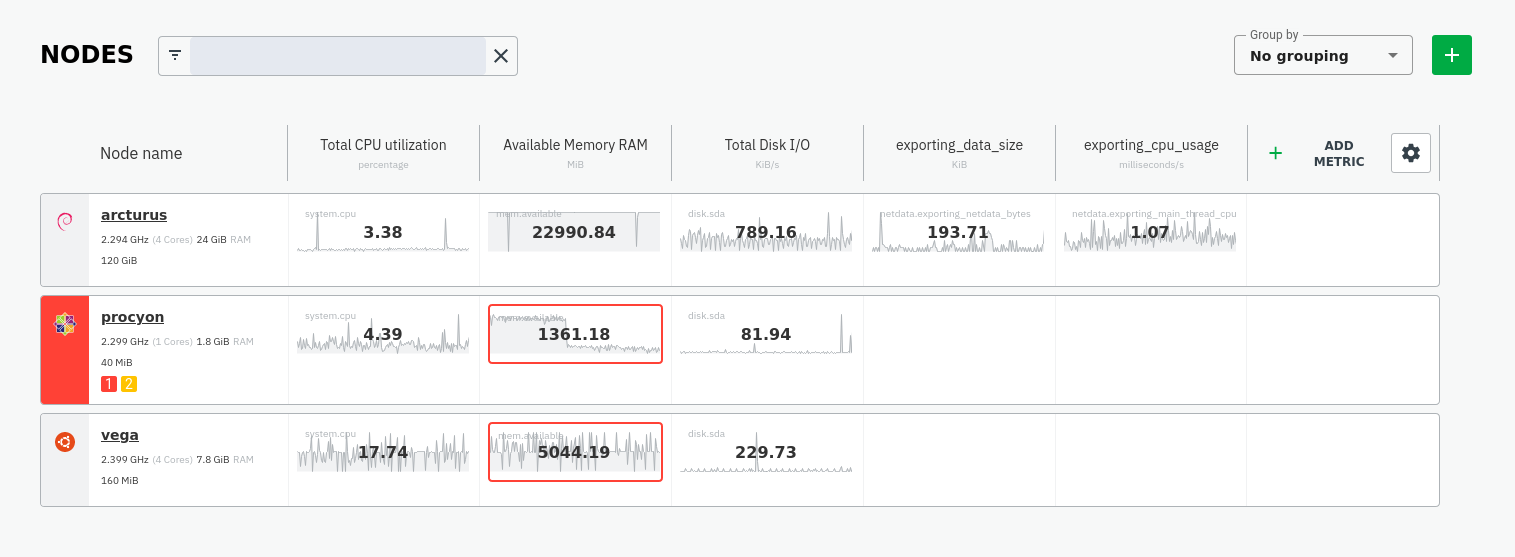1
2
3
4
5
6
7
8
9
10
11
12
13
14
15
16
17
18
19
20
21
22
23
24
25
26
27
28
29
30
31
32
33
34
35
36
37
38
39
40
41
42
43
44
45
46
47
48
49
50
51
52
53
54
55
56
57
58
59
60
61
62
63
64
65
66
67
68
69
70
71
72
73
74
75
76
77
78
79
80
81
82
83
84
85
86
87
88
89
90
91
92
93
94
95
96
97
98
99
100
101
102
103
104
105
106
107
108
109
110
111
112
113
114
115
116
117
118
119
120
121
122
123
124
125
126
127
128
|
# Export metrics to Graphite providers
You can use the Graphite connector for
the [exporting engine](https://github.com/netdata/netdata/blob/master/exporting/README.md) to archive your agent's
metrics to Graphite providers for long-term storage, further analysis, or correlation with data from other sources.
## Prerequisites
You have already [installed Netdata](https://github.com/netdata/netdata/edit/master/packaging/installer/README.md) and
Graphite.
## Configuration
Begin by using `edit-config` to open the `exporting.conf` file.
```bash
cd /etc/netdata # Replace this path with your Netdata config directory
sudo ./edit-config exporting.conf
```
Enable the exporting engine by setting `enabled` to `yes` in the `[exporting:global]` section.
```conf
[exporting:global]
enabled = yes
```
Next, configure the connector. Find the `[graphite:my_graphite_instance]` example section and uncomment the line.
Set the `destination` setting to `localhost:2003`. By default, the Docker image for Graphite listens on port `2003` for
incoming metrics. If you installed Graphite a different way, you may need to change the port accordingly.
```conf
[graphite:netdata]
enabled = yes
destination = localhost:2003
...
```
Add `:http` or `:https` modifiers to the connector type if you need to use other than a plaintext protocol. For
example: `graphite:http:my_graphite_instance`,
`graphite:https:my_graphite_instance`. You can set basic HTTP authentication credentials using
```conf
username = my_username
password = my_password
```
The final result for a remote, secured host should be the following:
```conf
[graphite:https:netdata]
enabled = yes
username = my_username
password = my_password
destination = remote_host_url:2003
# data source = average
# prefix = netdata
# hostname = my_hostname
# update every = 10
# buffer on failures = 10
# timeout ms = 20000
# send names instead of ids = yes
# send charts matching = *
# send hosts matching = localhost *
```
We'll not worry about the [rest of the settings](https://github.com/netdata/netdata/blob/master/exporting/README.md#options)
for now. Restart the Agent using `sudo systemctl restart netdata`, or the
[appropriate method](https://github.com/netdata/netdata/blob/master/docs/configure/start-stop-restart.md) for your
system, to spin up the exporting engine.
## See and organize Netdata metrics in Graphite
Head back to the Graphite interface again, then click on the **Dashboard** link to get started with Netdata's exported
metrics. You can also navigate directly to `http://NODE/dashboard`.
Let's switch the interface to help you understand which metrics Netdata is exporting to Graphite. Click on **Dashboard**
and **Configure UI**, then choose the **Tree** option. Refresh your browser to change the UI.

You should now see a tree of available contexts, including one that matches the hostname of the Agent exporting metrics.
In this example, the Agent's hostname is `arcturus`.
Let's add some system CPU charts so you can monitor the long-term health of your system. Click through the tree to find
**hostname → system → cpu** metrics, then click on the **user** context. A chart with metrics from that context appears
in the dashboard. Add a few other system CPU charts to flesh things out.
Next, let's combine one or two of these charts. Click and drag one chart onto the other, and wait until the green **Drop
to merge** dialog appears. Release to merge the charts.

Finally, save your dashboard. Click **Dashboard**, then **Save As**, then choose a name. Your dashboard is now saved.
Of course, this is just the beginning of the customization you can do with Graphite. You can change the time range,
share your dashboard with others, or use the composer to customize the size and appearance of specific charts. Learn
more about adding, modifying, and combining graphs in
the [Graphite docs](https://graphite.readthedocs.io/en/latest/dashboard.html).
## Monitor the exporting engine
As soon as the exporting engine begins, Netdata begins reporting metrics about the system's health and performance.

You can use these charts to verify that Netdata is properly exporting metrics to Graphite. You can even add these
exporting charts to your Graphite dashboard!
### Add exporting charts to Netdata Cloud
You can also show these exporting engine metrics on Netdata Cloud. If you don't have an account already,
go [sign in](https://app.netdata.cloud) and get started for free.
Add more metrics to a War Room's Nodes tab by clicking on the **Add metric** button, then typing `exporting` into the
context field. Choose the exporting contexts you want to add, then click **Add**. You'll see these charts alongside any
others you've customized in Netdata Cloud.

## What's next
What you do with your exported metrics is entirely up to you, but as you might have seen in the Graphite connector
configuration block, there are many other ways to tweak and customize which metrics you export to Graphite and how
often.
For full details about each configuration option and what it does, see
the [exporting reference guide](https://github.com/netdata/netdata/blob/master/exporting/README.md).
|
